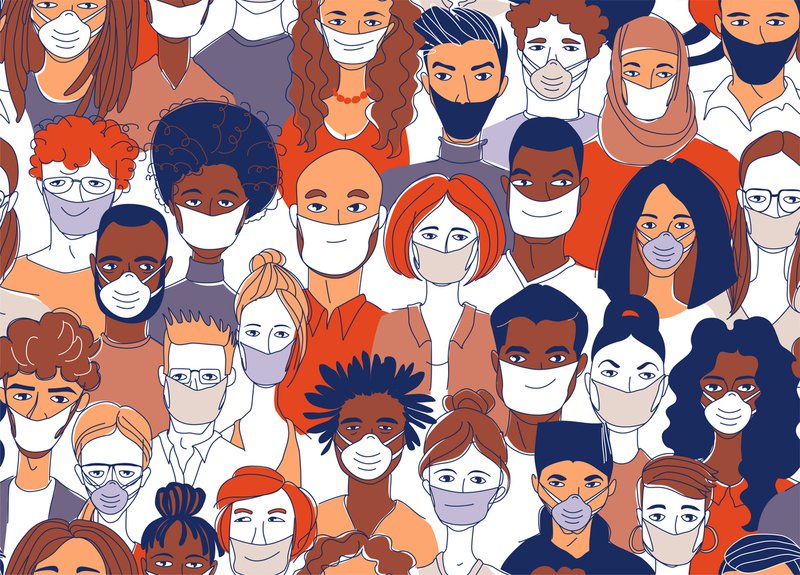
ERIC REGULY | Opinion
Sept. 5, 2020
The lockdowns triggered by the COVID-19 pandemic have been economically brutal – and could return as the number of infections shoots up again in some parts of the world. In June and July the infection rate plummeted, at least in Europe, leading many of us to believe the virus was sputtering out.

Not so – it was just on a summer break. Employers, finance ministers and central bankers are wondering again how they can find enough money to prevent mass economic suicide. Global GDP fell 15.6 per cent in the first half of the year, according to JPMorgan Chase. Recoveries are under way, but they won’t fill the hole. The International Monetary Fund expects the world economy to shrink almost 5 per cent for all of 2020. GDP in the U.K. and the euro zone will fall 10 per cent or more this year; in the United States, the forecast figure is 8 per cent.
All GDP bets are off if the infections keep climbing from their summer lows. Italy, the original epicentre of the European pandemic, was recording a couple of hundred new cases a day or less in June and July. Today the figure is about 1,500, as is the U.K.’s. In Spain it’s four or five times higher. Ditto in France. The U.S. numbers, relatively speaking, are off the charts.
Vaccines are supposed to spare us from economic calamity, and political leaders such as Donald Trump, Boris Johnson and Vladimir Putin are putting enormous pressure on drug regulators to fast-track vaccines that are still in early clinical trials (Russia has just approved one that was tested on fewer than 100 people). They are deluded. Even if some vaccines get the green light late this year, manufacturing, refrigerated storage and distribution bottlenecks will almost certainly delay their widespread deployment until mid-2021 or later. The World Health Organization backed that view Friday.
But all hope is not lost for the economy and jobs. Two relatively cheap solutions already exist to keep economies trundling along: masks and the new generation of rapid COVID-19 tests. The trouble is, neither is being embraced with alacrity, even if their benefits are obvious. Governments, charities and philanthropists such as Bill Gates are instead throwing fortunes at vaccines. Inexpensive, low-tech solutions could save a lot of lives and prevent economic collapse before the vaccines arrive.
Why mask use is not mandatory every time you step out of the house is a mystery. Seat belts became mandatory pretty much everywhere decades ago – even though they were initially dismissed by drivers as uncomfortable and as assaults on personal freedom – and have probably saved millions of lives (the U.S. National Highway Traffic Safety Administration says seat belts used by front-seat passengers reduce the risk of fatality by 45 per cent in a crash). Today, almost no one hesitates to strap in.
But a mask? Forget it. They’re considered instruments of torture, and even in the cities, regions and countries where their use is mandatory on public transportation, in shops and elsewhere, the compliance rate is much less than 100 per cent. Virtually every day, a protest against masks, physical distancing and other perfectly sensible life-saving measures is taking place somewhere in the world, even in allegedly enlightened countries such as Germany.
By now, an ample body of evidence suggests rigorous mask use could prevent economic calamity – all the more since we have come to understand that aerosol transmission of the virus that causes COVID-19 is a clear and present danger. In an analysis published in late June, Goldman Sachs calculated that an increase of 15 percentage points in the share of the U.S. population using masks would cut the daily COVID-19 case growth by a full percentage point, to 0.6 per cent. That’s a huge drop. Goldman said: “We argue that a national face mask mandate could partially substitute for renewed lockdowns.”
Doing a similar analysis, the Economist magazine last month calculated that an American wearing a mask for a day would prevent a fall in GDP of US$56.14. That’s a pretty good return for a product that can be bought for half a buck.
Masks are one easy and effective pandemic-busting tool; another is rapid testing. More tests mean more positive cases can be isolated before they become super-spreaders. The study done by Italian microbiologist Andrea Crisanti, of the University of Padua, at the start of the pandemic found that 40 per cent of positive cases were asymptomatic.
Testing today is slow, expensive and uncomfortable, and sometimes you have to wait several days for the results. Faster tests are coming, but most of them still rely on a health care worker ramming a swab stick up your nose and sending the sample to a lab.
One new test in particular shows promise and it’s cheap, fast and non-patented. It’s called RT-LAMP (reverse transcription loop-mediated isothermal amplification) and can be done at home using a saliva sample. Dyes are typically used, meaning the results can be determined by colour. Evaluations of the test are under way in schools in Southampton, England. Trials in homes there this year were successful.
Absent an effective and safe vaccine, the mass use of masks and testing is the best way to protect public health and the economy. Expensive, high-tech solutions are not always the way to go.
This Globe and Mail article was legally licensed by AdvisorStream.
© Copyright 2025 The Globe and Mail Inc. All rights reserved.


